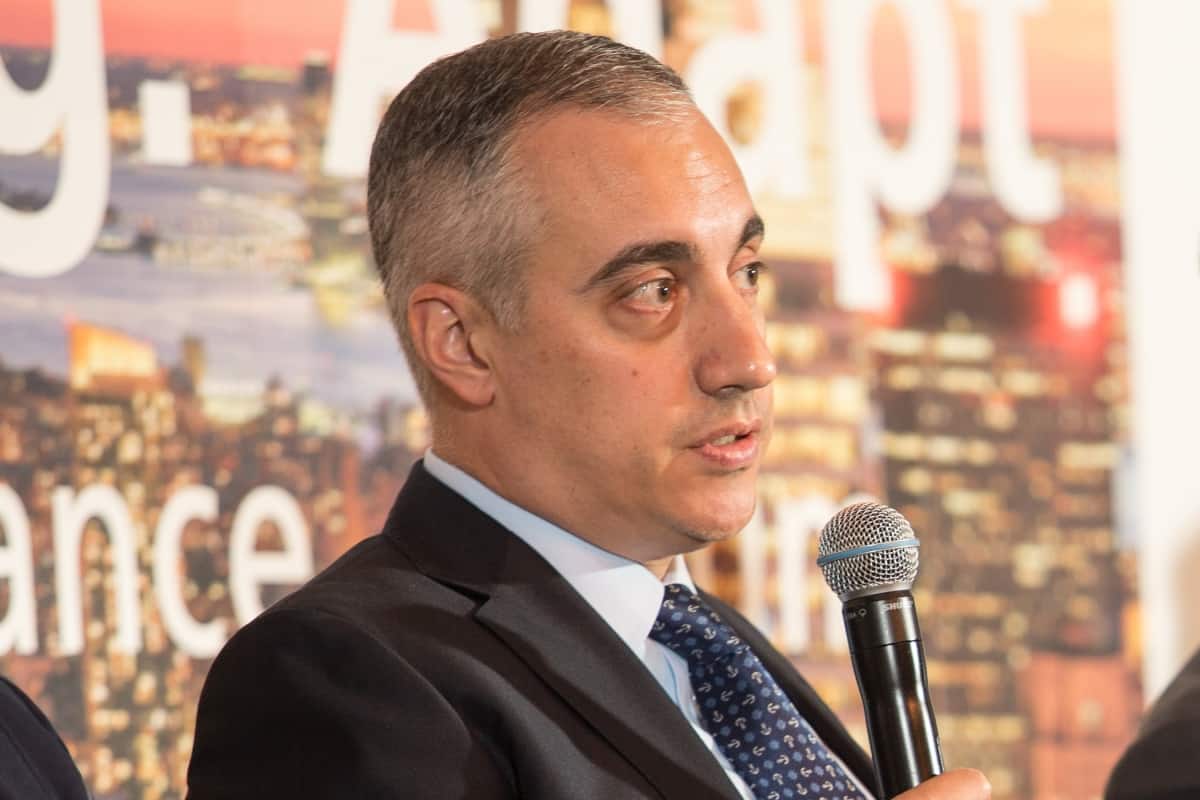What makes markets so interesting — and maddening — is that they tend to behave in ways you didn’t expect.
Take crude-tanker shipping. In October 2019, the threat to oil exports from the Middle East pushed spot freight rates to $190,000 per day. The supply-demand balance is even tighter now, and Middle East crude flows are once again theoretically under threat, so rates and tanker stock pricing should shoot up again, right?
In fact, rates have held relatively steady and stock prices are down.
The U.S. killed Iranian general Qassem Suleimani on Jan. 2. Iran retailed with airstrikes on Iraqi bases housing Americans on Jan. 7. If markets followed the pattern seen in the second half of last year, oil shippers would have bid up spot rates as they sought to secure cargoes as a hedge against possible military action in and around the Strait of Hormuz.
They haven’t, at least not yet. According to Clarksons Platou Securities, rates for very large crude carriers (VLCCs, tankers that carry 2 million barrels of crude each) averaged $84,800 per day on Jan. 13, down 9% week-on-week. On Jan. 2, rates averaged $101,400 per day.
Rates have hovered around the $85,000-$105,000 range since the most recent Iran tensions flared. That is a phenomenally high rate that will be extremely profitable for tanker owners, but the fact remains: Hostilities have not sparked a rate spike like the one seen in October.
After huge gains in the second half of 2019, crude-tanker equities such as Euronav (NYSE: EURN), Frontline (NYSE: FRO), DHT (NYSE: DHT), Teekay Tankers (NYSE: TNK) and Nordic American Tankers (NYSE: NAT) are down in the low- to mid-single digits since the start of this year.
To better understand what’s going on with crude-tanker rates and equity values and why there has not been a major “leg up” this time around, FreightWaves sought the opinions of three analysts: Jon Chappell, senior managing director of marine transportation and liquefied natural gas at Evercore ISI; Randy Giveans, lead shipping analyst and vice president of equity research at Jefferies; and J Mintzmyer, shipping analyst at Seeking Alpha’s Value Investor’s Edge.

Chappell answered, “There’s a lot to unpack there, but let’s start with: Why would we automatically assume that the killing of the general would drive tanker rates higher? Fear of disruption of Middle East oil because of or in addition to a retaliatory act in the Strait of Hormuz? That could have spiked VLCC rates, but that’s not what happened.
“Iran made their initial response, it was tame by most standards, and then all the dialogue pointed to not accelerating the conflict. So, in the world of VLCC chartering, absolutely nothing changed in the supply-demand picture,” Chappell said.
“Does that mean it won’t? No, but for now there seems to be calm and calm doesn’t shift VLCC sentiment.
“I think your point about where rates are today [i.e., extremely high] is also incredibly important,” Chappell told FreightWaves. “At those robust levels, it likely takes a lot more than an unpredictable retaliatory act to change sentiment on either side of the negotiating table. So, rates tick along around $100,000 a day and owners are minting money.”
Giveans described recent crude-tanker equity behavior as “silly moves … seesawing every day with big moves up followed by big moves down.”
He believes there are “lots of ‘tourist’ investors who got in at share prices well below current levels who want to get out at a gain and don’t want to ride these stocks down to where they bought them.”

Giveans also believes there could be sentiment headwinds related to the IMO 2020 rule, which has forced vessels not equipped with exhaust-gas scrubbers to switch from cheaper traditional 3.5% fuel known as high-sulfur fuel oil (HSFO) to more expensive 0.5% sulfur fuel known as very low sulfur fuel oil (VLSFO).
“Issues around VLSFO” may be “causing panic for tanker investors,” said Giveans, although he pointed out that “VLSFO compatibility problems would be good for vessels with scrubbers burning HSFO.” He is referring to concerns involving the multitude of VLSFO blends now being sold around the world, which may not be compatible with each other and may cause engine malfunctions.
His advice on the tanker stocks: “Heavy trading is good for liquidity but bad for stability. Buy the dip.”
Mintzmyer told FreightWaves, “The general market impact of Middle Eastern uncertainty is to increase reliance on alternate sources west of the Suez Canal including West Africa, Brazil and the U.S. Gulf. We’ve been seeing these impacts over the past six-plus months, but it’s a bit simplistic to expect tensions to translate immediately into higher rates.

“The broad market is also continually missing the forest for the trees as the past month has seen fixtures ranging from the $80,000s to as high as the $120,000-per-day level, which is remarkably strong. Normal seasonality suggests rates should be much weaker now and trending down for the summer.
“A more normal market would see rates in the $30,000-$40,000-a-day range right now, so I think we’re already experiencing a lot of those leg-ups you’re looking for. It’s just one huge leg-up instead of little unsustainable pops,” Mintzmyer said.
The crude-tanker rate situation was also discussed in client notes issued on Jan. 13 and Jan. 14 by Frode Mørkedal, managing director of research at Clarksons Platou Securities.
“The softer sentiment continues into this week,” he wrote. “Despite cargoes being worked, building tonnage lists are subduing the market. Activity is expected to increase into the week as February [cargo] programs are released, although our brokers see approximately 100 ships [in the Middle East Gulf] up to Feb. 8, meaning charterers are likely to continue to get their way.”
“In the FFA [forward freight agreement, i.e., futures] market, first-quarter contracts trade at $60,000/day, implying a large drop in earnings is expected into March for reasons which are unclear to us,” Mørkedal wrote. More FreightWaves/American Shipper articles by Greg Miller







